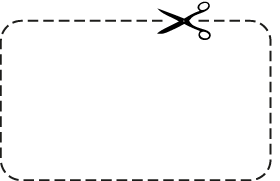The Battle of Iwo Jima (Operation Detachment) was a major battle in which the United States fought for and captured the island of Iwo Jima from the Empire of Japan. The US invasion, charged with the mission of capturing the three airfields on Iwo Jima, resulted in some of the fiercest fighting in the Pacific Campaign of WWII.
The Imperial Japanese Army positions on the island were heavily fortified, with a vast network of bunkers, hidden artillery and 11 miles of underground tunnels. The Americans were covered by extensive naval and air support, capable of delivering an enormous amount of firepower onto the Japanese positions. The battle was the first American attack on the Japanese Home Islands and the Imperial soldiers defended their positions tenaciously.
Iwo Jima was also the only US Marine battle where the American overall casualties exceeded the Japanese, although Japanese combat deaths numbered three times that of Americans. Of the more than 18,000 Japanese soldiers present at the beginning of the battle, only 216 were taken prisoner. The rest were killed or missing and presumed dead.
Despite heavy fighting and casualties on both sides, Japanese defeat was assured from the start. The Americans possessed an overwhelming superiority in arms and numbers. This, coupled with the impossibility of Japanese retreat or reinforcement, ensured that there was no plausible scenario in which the US could have lost the battle.
The battle was immortalized by Joe Rosenthal's photograph of the raising of the US flag on top of the 545-foot Mount Suribachi by five Marines and a Naval Corpsman, which took place on the fifth day of the 35-day battle. The picture became the iconic image of the battle and has been heavily reproduced.
On February 19, 1985, the 40th anniversary of the landings, and event called The Reunion of Honor was held. Veterans of both sides who fought in the battle of Iwo Jima attended the event. The place was the invasion beach where the US forces landed. A memorial, with inscriptions engraved on both sides, was built at the center of the meeting place.
The Imperial Japanese Army positions on the island were heavily fortified, with a vast network of bunkers, hidden artillery and 11 miles of underground tunnels. The Americans were covered by extensive naval and air support, capable of delivering an enormous amount of firepower onto the Japanese positions. The battle was the first American attack on the Japanese Home Islands and the Imperial soldiers defended their positions tenaciously.
Iwo Jima was also the only US Marine battle where the American overall casualties exceeded the Japanese, although Japanese combat deaths numbered three times that of Americans. Of the more than 18,000 Japanese soldiers present at the beginning of the battle, only 216 were taken prisoner. The rest were killed or missing and presumed dead.
Despite heavy fighting and casualties on both sides, Japanese defeat was assured from the start. The Americans possessed an overwhelming superiority in arms and numbers. This, coupled with the impossibility of Japanese retreat or reinforcement, ensured that there was no plausible scenario in which the US could have lost the battle.
The battle was immortalized by Joe Rosenthal's photograph of the raising of the US flag on top of the 545-foot Mount Suribachi by five Marines and a Naval Corpsman, which took place on the fifth day of the 35-day battle. The picture became the iconic image of the battle and has been heavily reproduced.
On February 19, 1985, the 40th anniversary of the landings, and event called The Reunion of Honor was held. Veterans of both sides who fought in the battle of Iwo Jima attended the event. The place was the invasion beach where the US forces landed. A memorial, with inscriptions engraved on both sides, was built at the center of the meeting place.


 RSS Feed
RSS Feed










